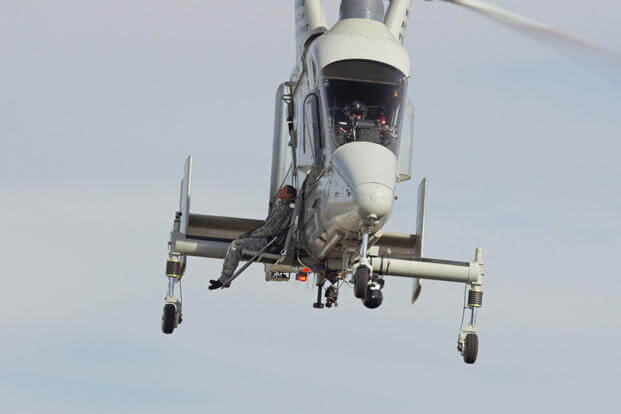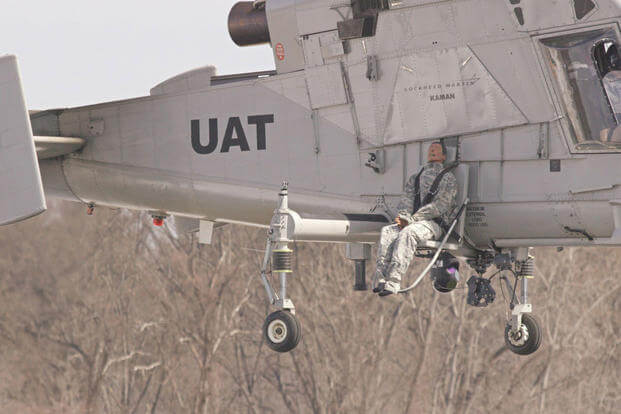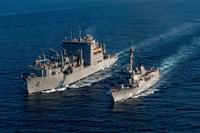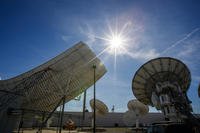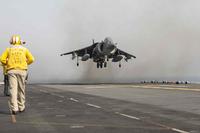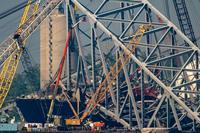One day soon, combat units may evacuate their wounded from the battlefield with the help of unmanned aircraft.
In late March, three defense firms worked together to conduct the first casualty evacuation using a KMAX unmanned cargo helicopter, according to Lockheed Martin.
The U.S. Marine Corps relied on the unmanned KMAX from 2011 to 2014 to conduct resupply operations, delivering more than 4.5 million pounds of cargo during more than 1,900 combat missions.
Manufactured by Kaman Aerospace and outfitted with an advanced mission suite by Lockheed Martin, the unmanned K-MAX is engineered with a twin-rotor design that maximizes lift capability in the most challenging environments.
Its advanced autonomy allows unmanned K-MAX to work day and night, in all-weather, even when manned assets are unable to fly, according to the release.
Lockheed, Kaman and Neya Systems pushed the capability to new levels by using unmanned aerial system Control Segment Architecture and with the K-MAX to evacuate a simulated ground casualty on March 26, according to a Lockheed Martin release.
During the demonstration, a distress call led ground operators to send an unmanned ground vehicle to assess the area and injured party. The ground operators used control stations that communicated with one another using the UAS control segment architecture.
The ground operators requested airlift by an unmanned K-MAX of one individual who was injured. From the ground, the K-MAX operators used a tablet to determine the precise location and a safe landing area to provide assistance to the team. The injured team member, a mannequin, was strapped into a seat on the side of the unmanned K-MAX, which then flew that individual to safety.
There was, however, a pilot on board the KMAX to satisfy the Federal Aviation Administration's safety protocols, according to Emily Kleiman, spokeswoman for Lockheed.
"In order to comply with FAA regulations, we do have to have a safety pilot on board, however the KMAX was controlled directly by ground operators," Kleiman told Military.com.
Lockheed officials were pleased with the demonstration.
"This application of the unmanned K-MAX enables day or night transport of wounded personnel to safety without endangering additional lives," said Jay McConville, director of business development for Unmanned Integrated Solutions at Lockheed Martin Mission Systems and Training.
"Since the K-MAX returned from a nearly three-year deployment with the U.S. Marine Corps, we've seen benefits of and extended our open system design incorporating the UCS Architecture, which allows rapid integration of new applications across industry to increase the safety of operations, such as casualty evacuation, where lives are at stake."
Neya officials said they were continuing to develop advanced technologies for human robot interfaces for complex platforms and multi-robot missions, Parag Batavia, president of Neya, said in the release.
"Our and Lockheed Martin's use of the unmanned aircraft system control segment architecture greatly sped up integration of our respective technologies, resulting in a comprehensive capability that can be ultimately transitioned to the warfighter very efficiently," he said.
Lockheed is a global security and aerospace company based in Bethesda, Md. Kaman Aerospace is a division Kaman Corporation, which was founded in 1945 by aviation pioneer Charles H. Kaman. It's headquartered in Bloomfield, Conn. And Neya Systems, LLC is a small business unmanned systems company based in Wexford, Penn.
-- Matthew Cox can be reached at Matthew.Cox@military.com.
